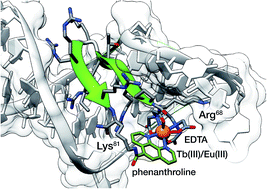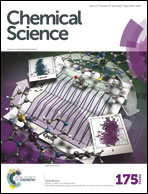Coupling the folding of a β-hairpin with chelation-enhanced luminescence of Tb(iii) and Eu(iii) ions for specific sensing of a viral RNA†
Abstract
Rational modification of a natural RNA-binding peptide with a lanthanide EDTA chelator, and a phenanthroline ligand yields a highly selective luminescent sensor. The sensing mechanism relies on the RNA-triggered folding of the peptide into a β-hairpin, which promotes the coordination of the phenanthroline sensitizer, and the efficient sensitization of complexed lanthanide ions.



 Please wait while we load your content...
Please wait while we load your content...